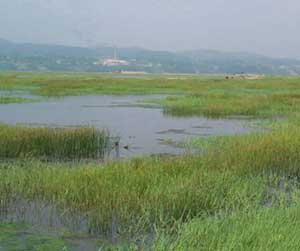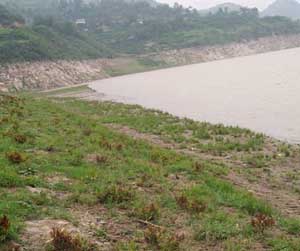Researchers Reveal Ecological Function of Shoreline Wetlands along the Danjiangkou Reservoir
2011-06-14
The Danjiangkou Reservoir, one of the largest impoundments with fluctuation zones over 300 km2, is a water source area of China’s South-to-North Water Transfer Project. As the ecotone between terrestrial and aquatic ecosystems, shoreline wetlands (i.e. water fluctuation zone) have potential to retain nitrogen and phosphorus from agricultural run-off for water conservation of the reservoir.
Dr Wenzhi Liu, Guihua Liu, and Quanfa Zhang from Wuhan Botanical Garden of Chinese Academy of Sciences studied the phosphorus sorption and desorption properties of wetland soils using a batch equilibrium technique. They found that the maximum phosphorus sorption ranged from 435 to 1429 mg/kg, with an average of 771.3 mg/kg. The phosphorus desorption percentage varied from 8 to 44%, with a mean value of 24.11%. Using the acetylene block technique and gas chromatographic analysis, they also found that denitrification enzyme activity (DEA) varied significantly among five representative plant communities and the higher DEA was observed in the Polygonum hydropiper and Scirpus triqueter communities. Plant biomass and vegetation cover were significantly and positively related to DEA and together explained 44.2% of the total variance.
The results of their research suggested that Polygonum hydropiper and Scirpus triqueter were good candidates for revegetation in future shoreline wetlands of the Danjiangkou Reservoir after dam heightening. The above results have been published in Marine and Freshwater Research (61: 507–512) and Clean – Soil, Air, Water (39: 109–115).


Wetland landscapes in the Danjiangkou Reservoir